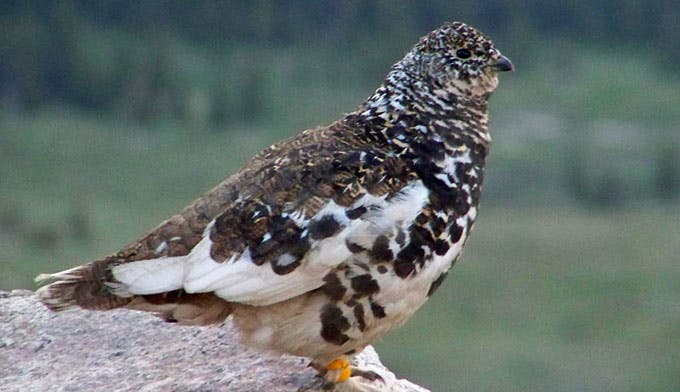Birdwatching in Rocky Mountain National Park

'Wikimedia Commons Public Domain'
Rocky Mountain Park roadways and trails provide access for bird lovers throughout the Park. Those who wish to spend weeks on end exploring the rugged backcountry will be able to do so on one of the Park’s many trails. Since Rocky Mountain National Park’s creation in 1915, 280 species of birds have been spotted throughout the Park and surrounding regions. Simply put if you are a birder this is the place to be in Colorado.
Exploring the Park is simple. Hike into crystal-clear backcountry lakes, tall aspen groves, thick ponderosa pine, or through expansive open tundra. A large majority of the Park is also accessible by car and short relatively easy hikes.
Birdwatching at Cub Lake
One of the best areas to easily access many of the Park’s water birds is from the Cub Lake Trailhead. Here birders can head up the relatively flat trail to Cub Lake. Along the way look for Swainson’s Thrush and Lincoln’s Sparrow hidden in the reeds lining the creek.
Birdwatching at Endovalley Picnic Area
A bit further to the north, Endovalley Picnic Area is another birder’s favorite. Ditch your car at the lot and head into the aspen and spruce groves to find Olive-sided Flycatchers and Pine Grosbeak. Other birds commonly found in aspen groves include Warbling Viereo, woodpeckers and swallows. For more birding continue up Old Fall River Road (only accessible during summer) and look for birds along the valley.
High-alpine Birdwatching
To access the high alpine tundra two options present themselves. The first is to head out on horseback or by foot along one of the Park’s 350 plus miles of hiking trails, or to drive Trail Ridge Road. Trail Ridge takes drivers above 12,000 feet and has several turnouts ideal for birding opportunities. Hiking up a trail accessed from the Rock Cut turnout spotters can see one of the most prized birds of the Park: the White-tailed Ptarmigan. The Ptarmigan resides in the alpine tundra year-around and is the only Ptarmigan to have a white tale. Don’t be fooled by the name though, during summer months the bird can have extensive dark patches and be hard to spot.

Kawuneeche Valley
Heading to the western side of the divide plan on exploring Kawuneeche Valley. Aspen groves, willows, and pine are all in abundance and the headwaters of the Colorado river provides several hiking opportunities and trails. Moose and Elk are also common in the valley satisfying most wildlife enthusiasts.
Ranger-led Bird Programs
One of the Park’s most popular ranger-led programs happens during summer months as rangers lead bird watching tours throughout the park. http://www.nps.gov/romo/planyourvisit/ranger_led_activities.htm
If you plan on exploring the park on your own remember to have a good spotting scope since some areas may be hard to access. If planning to head into the backcountry grab a camping permit from the backcountry office and head out on hopefully a life-changing journey.